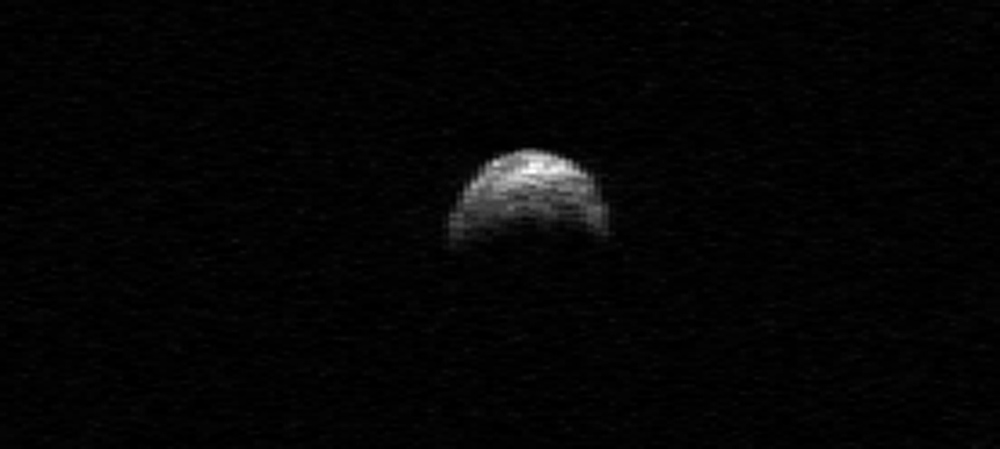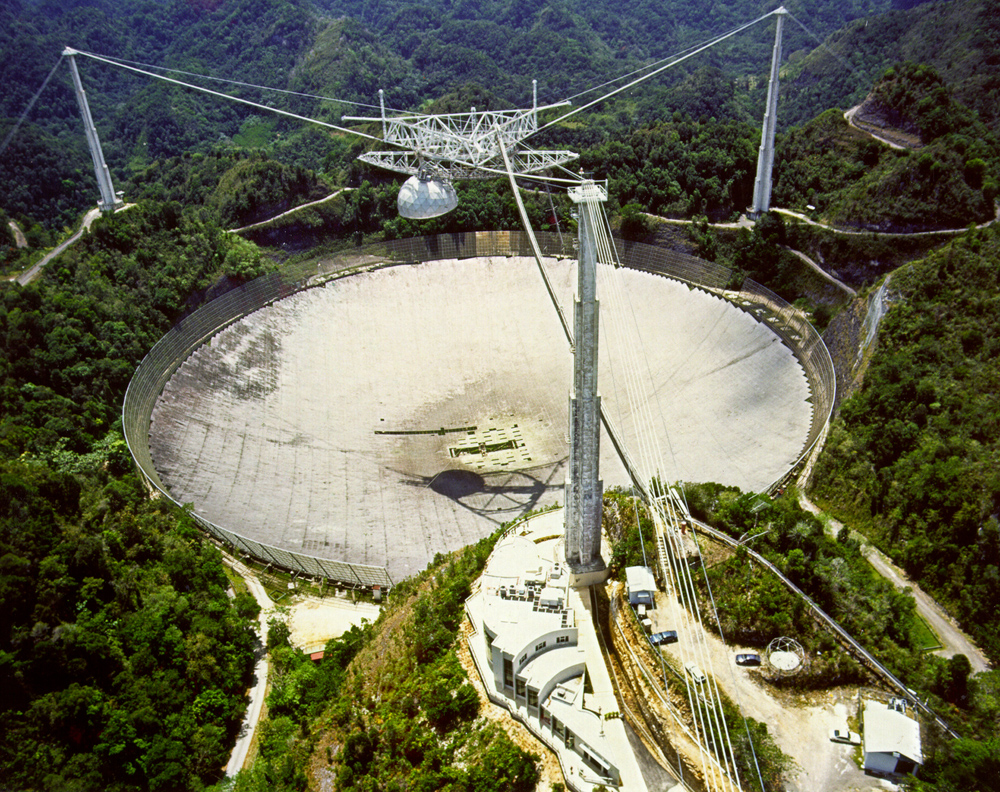NASA Tracking Huge Asteroid with Radar for Tuesday Encounter

A quarter-mile wide asteroid called 2005 YU55 will slip close by Earth Tuesday (Nov. 8) while astronomers around the world watch through telescopes. But some scientists are using a different way to scan the space rock: radar.
The huge Arecibo radio telescope in Puerto Rico and a NASA antenna in California are bombarding asteroid 2005 YU55 with radar signals to get a rare and close look at a huge space rock. The asteroid, which is about 1,300 feet (400 meters) wide, is the first giant space rock in 25 years to make a close pass by Earth with enough warning that astronomers could prepare to observe it in advance.
Asteroid 2005 YU55 will fly inside the orbit of the moon, coming within 201,700 miles (324,600 kilometers) on Tuesday at 6:28 p.m. EST (2328 GMT), when it makes its closest approach. The asteroid poses no threat of impacting Earth during the close encounter, NASA astronomers have said.
But asteroid 2005 YU55 isn't the only space rock in NASA's radar sights. Of the more than 8,400 objects passing through Earth's neighborhood as the planet cuts its way through the solar system, more than 1,000 objects have orbits classifying them as potentially hazardous.
Pinpointing these near-Earth objects, or NEOs, requires more precision than optical telescopes can provide. Astronomers turn to radar to accurately predict how close to our planet an object will pass. [Photos: Flyby of Giant Asteroid 2005 YU55]
Space rock radar
While most astronomers depend on emissions either originating from or reflected by the asteroid, some rely on signals sent from our planet.
Get the world’s most fascinating discoveries delivered straight to your inbox.
Astronomers ping the body — usually a comet or an asteroid — and measure how long it takes for the radio signal to return, then use that information to calculate the distance. The method is extremely precise, locating the comet or asteroid within about 30 feet (10 meters), a narrow window on an astronomical ruler.
Radar can also measure how fast an object is traveling toward Earth with an accuracy of up to 1 millimeter per second. Knowing the location and distance allows scientists to compute its orbit and determine whether or not it may collide with the Earth.
Radar can also map the details of the exterior of an NEO. When 2005 YU55 passes Earth Tuesday, radar will be used to study its surface features.
"If there is a crater on the surface of the object only a few meters in diameter, we're hoping to see it," NASA's Near-Earth Object Office manager Don Yeomans told SPACE.com. "There's no way on Earth you could see that via optical."
Signal origin: Earth
For pinging asteroids, radar signals can be sent from two places on our planet: the Arecibo Observatory in Puerto Rico, and Goldstone Deep Space Communications Complex in southern California.
With a diameter of 1,000 feet (nearly 305 meters), Arecibo boasts the larger telescope and is capable of capturing more in-depth images. It can also peer further out into space. But its vast size makes it sedentary, locked into only a particular patch of the sky.
The smaller, more mobile telescope at Goldstone can cover up to 80 percent of the sky, catching objects missed by its southern partner. This also gives it more time on a single target.
Most of the time, the two compliment each other. Used together, they can provide a vast amount of data about the comets and asteroids that pass near Earth.
"Arecibo is used for about thirty different near-Earth asteroids each year," Yeomans said. Goldstone is used only slightly less.
Radar: Not just for asteroids
Not surprisingly, the moon was the first target pinged by radar, in the mid 1940s. Venus was the next choice, followed quickly by two asteroids, the terrestrial planets, and the rings of Saturn between 1960 and 1975. [Photos: Asteroids in Deep Space]
Since then, objects as distant as the Galilean moons of Jupiter and Saturn's moon, Titan, have been examined by radar from the surface of the Earth.
Various space missions have also been outfitted with radar to study the planets up close.
But over the last few years, the use of radar has picked up steam, particularly for near-Earth objects.
"It became more prevalent in the '90s," Yeomans said. "And even more prevalent today."
Despite the benefits of radar for space observations, the method does have its drawbacks.
It can only monitor the surface features, not their composition. It can't be used to discover new objects; they must be found optically, then zoomed in on with radar.
But for objects that most likely won't ever have their own mission, radar can garner spacecraft-quality data. It can chart their paths, which can then be calculated into the future.
If a comet or asteroid is considered likely to crash into Earth, radar can be used for an in-depth study to determine what countermeasures can be taken.
Almost 280 NEOs have been studied by radar, broadening our understanding of them. Radar reveals rotation, speed, shapes, and occasionally turns up surprise asteroid companions.
The snapshots of the early solar system provided by radar help us understand what things were like when our planet was just beginning. That such a method could help Earth avoid a catastrophic ending is an added bonus.
This story was provided by SPACE.com, a sister site to LiveScience. Follow SPACE.com for the latest in space science and exploration news on Twitter @Spacedotcom and on Facebook.

Nola Taylor Tillman is a contributing writer for Live Science and Space.com. She loves all things space and astronomy-related, and enjoys the opportunity to learn more. She has a Bachelor’s degree in English and Astrophysics from Agnes Scott college and served as an intern at Sky & Telescope magazine. In her free time, she homeschools her four children.





